Digital Marketing vs. Traditional Marketing: Unveiling the Winning Strategy
In today’s ever-changing world, marketing is as important as designing the product, strategy, or customer service in any business setting.
According to Philip Kotler, marketing is the science and art of exploring, creating, and delivering value to satisfy the needs of a target market while making a profit.
In layman’s language, the process of drawing in prospective clients or customers interested in your goods and services is called marketing. The research shows most people characterize marketing as selling or promoting since they are frequently unsure of what it entails. These responses are not entirely incorrect, but they only cover a small portion of marketing. A wide range of additional topics are covered, including market research, developing market segments, advertising, product distribution, designing and producing content for social media and landing sites, enhancing the customer experience, and much more.
Understanding the scope of marketing can be facilitated by knowing the 4Ps: product, price, place, and promotion.
Traditional and digital marketing are two sides of the same coin, each with unique advantages and disadvantages. The argument over the best approach becomes more relevant as companies look to engage their customers.
What is Digital Marketing?
Digital marketing is the art of promoting products or services using digital channels such as websites, social media, search engines, email, and mobile apps. It’s about reaching and engaging with potential customers online to drive sales, brand awareness, or other business goals.
It is more effective in reaching and engaging target audiences because it allows firms to send personalized messages and adverts based on their interests and behavior. It also enables real-time monitoring of their effectiveness. It is also a less expensive method of increasing sales.

Examples of Digital Marketing
1. Social Media Marketing:
Social Media Marketing is one of the most popular forms of digital marketing. Social media platforms like Facebook, Instagram, Twitter, and LinkedIn are used to promote products/ services. Companies create engaging content, run targeted ads, and interact with their audience to build brand awareness and drive sales.
For example, a clothing brand might use Instagram/ Facebook to showcase its latest collection, collaborate with influencers to reach a wider audience, and run sponsored posts to drive traffic to its online store.
2. Search Engine Optimization (SEO):
SEO is optimizing websites to rank higher in search engine results pages (SERPs). By enhancing the website’s visibility, businesses can attract more organic (non-paid) traffic and increase the chances of being discovered by potential customers.
For example, a local restaurant might optimize its website with relevant keywords like “best restaurant in XYZ city” to appear higher in search results when searching for restaurants in that area.
3. Content Marketing:
Content marketing creates and shares valuable, relevant, consistent content to attract and retain a target audience. This can include blog posts, articles, videos, infographics, and many more.
For example, a cosmetic brand might create informative blog posts about their cosmetic products and how they can work wonders for people.
4. Email Marketing:
Email marketing involves sending targeted emails to a group of subscribers. Businesses use email campaigns to nurture leads, promote products, share updates, and build customer loyalty.
For instance, an e-commerce store might send personalized emails to customers who abandoned their shopping carts, offering discounts or reminding them of the items they left behind.
5. Influencer Marketing:
Influencer marketing involves collaborating with individuals on social media to promote products or services. These influencers have a large following and can sway their audience’s purchasing decisions.
For example, a beauty brand might collaborate with a popular beauty influencer to create sponsored content featuring their products, reaching a wider audience and gaining credibility through the influencer’s endorsement.
6. Pay-Per-Click (PPC) Advertising:
PPC advertising is a model in which advertisers pay a fee each time their ad is clicked. It allows businesses to display ads on search engines like Google or social media platforms and target specific keywords or demographics.
For instance, online travel companies like MakeMy Trip, Goibibo, etc. might use PPC advertising to bid on keywords like “best vacation deals” or “affordable flights” to appear at the top of search results and drive traffic to their website.
You may also like reading 8 Key Differences – Branding, Marketing, and Advertising
Pros and Cons of Digital Marketing –
Pros of Digital Marketing:
- Cost-effectiveness: Compared to traditional marketing channels, this medium frequently involves smaller financial commitments. All sizes of organizations can benefit from the low expenses associated with digital platforms like content marketing, email marketing, social media advertising, and many more.
- Wide Range of Channels: This media includes many online channels and platforms, such as email, websites, mobile apps, social media, search engines, and more. Due to this diversity, businesses have more opportunities to communicate and engage with potential clients, which raises awareness of their brands.
- Measurable outcomes: Digital marketing offers more tracking and analytics tools than traditional marketing does. Companies may monitor website traffic, conversions, engagement, and other metrics to evaluate the efficacy of their marketing tactics and analyze the campaigns’ performance in real time.
- Flexibility and agility: Using real-time data and insights, this medium enables marketing efforts to be quickly modified and adjusted. Businesses are more equipped to respond to consumer preferences, and market trends, optimize their advertising, and quickly adjust their strategy.
- Targeted Reach: Based on demographics, hobbies, and online activity, it enables companies to focus on specific audiences. The most pertinent potential clients are the focus of marketing efforts thanks to this focused strategy.
Cons of Digital Marketing:
- Constantly evolving landscape: Trends and technologies in digital marketing are ever-changing. Maintaining a competitive edge in the business world means that companies must constantly study and adapt to the newest advancements and emerging platforms.
- Technical expertise required: Campaign management and implementation in digital marketing frequently call for technical know-how. To properly use the tools, platforms, and techniques of digital marketing, businesses might need to spend money on training or employing experts.
- Digital overload: As digital marketing becomes more and more common, people are continually exposed to a barrage of online advertisements and promotional messages. Because of this saturation, consumers may become weary of ads and have shorter attention spans, which makes it harder for companies to stand out and successfully draw in customers.
- Dependency on technology: Platforms and technical infrastructure play a major role in digital marketing. The performance and visibility of Digital Marketing efforts might be affected by server outages, technical problems, or algorithmic adjustments.
- Digital security and privacy concerns: Concerns regarding data security and privacy are brought up by the collection and storage of consumer data for digital marketing purposes. Companies need to be sure they are following data protection laws and taking the necessary precautions to protect client information.
What is Traditional Marketing?
Despite digital marketing taking over the marketing world, traditional marketing still plays an important role in outreach and advertising.
Traditional Marketing is a marketing strategy that promotes products and services using traditional advertising channels such as magazines, billboards, newspapers, text messages, television, posters, radio, etc. to reach and engage target customers.
It focuses heavily on mass media to reach out to potential customers and persuade them to buy products, services, etc. One of the major drawbacks of traditional marketing is that it’s less productive and generally more expensive. Another important drawback is that is geographically constrained.

Examples of Traditional Marketing
1. Outdoor Marketing Campaign:
Outdoor Marketing, as the name implies, is a marketing strategy in which companies meet consumers/ buyers in public places. Advertising campaigns are significant not only in local businesses but also in huge global corporations like Coca-Cola, Pepsi, Facebook, KFC, McDonald’s, Amazon, Netflix, etc. also heavily invest in outdoor marketing.
Here are some common examples of Outdoor Marketing:-
- Street Furniture- Ads placed on news racks, telephone booths, bus seats, urban panels, bus shelters, etc.
- Billboards- They generally include murals, bulletins, digital billboards, banners, etc.
2. Print Marketing:
Print media is used for marketing and advertising. It would not be incorrect to argue that this is the most traditional marketing method to exist. Print marketing is highly effective, as seen by the fact that various businesses in the US spend USD 25 billion annually on print advertising and marketing. Print advertising commonly appears in newspapers, periodicals, directories, brochures, etc. Newspaper advertisements rank second among customers’ preferred marketing formats, with magazine ads coming in third, according to the Nielson Survey.
3. Broadcasting Marketing :
Reaching the target demographic through radio or television advertisements is known as broadcast marketing. When a company wishes to reach a large or local audience, broadcasting marketing is quite successful. For example, local TV stations are a good place for a brand to advertise locally. Similarly, national or state-level audiences are the ones you will undoubtedly target with national TV networks. Broadcast marketing is a timeless form of advertising.
4. Telemarketing:
Businesses can reach their clients by phone calls, faxes, text messages, and web conferencing through telemarketing, a kind of traditional marketing. In the 1970s, telemarketing was one of the most effective ways to engage with customers on a personalized basis. Being able to promptly respond to all the customers’ or potential customers’ questions is one of the best things about telemarketing. But telemarketing is subject to stringent restrictions and regulations, and its success rate is also quite low. For example, a 2% success rate is achieved by cold calling, a telemarketing tactic, even for highly educated individuals.
Telemarketing also offers instant feedback, in contrast to other marketing methods, so businesses may immediately ascertain client replies, objections, or areas of interest. Refinement of marketing strategy can greatly benefit from this input. Businesses can get real-time feedback from customers through telemarketing. Salespeople can listen to complaints, comments, and areas of interest from customers by having a discussion. Because of this instant feedback, companies may instantly modify their marketing plans to address client problems or draw attention to particular qualities or advantages of their goods or services.
- Referral: This type of marketing involves asking clients or staff members to tell their friends, family, and neighbors about the company’s goods or services.
- Direct mail: It is a type of postal marketing in which a company distributes customized postcards, brochures, catalogs, discounts, or letters to current or prospective clients in a particular region or market niche.
Pros and Cons of Traditional Marketing –
Pros of Traditional Marketing:
- Local targeting: Traditional marketing works well for companies that operate in certain regions because it enables efficient local targeting. The target audience can be effectively reached in a specific location by local newspapers, radio stations, and community events.
- Tangibility: In traditional marketing, clients are given a tactile presence through printed materials like brochures, flyers, and billboards. These tangible products improve brand awareness and recall since they can be seen, felt, and preserved for later use.
- Personal Interaction: Direct human interactions with potential clients are made possible by certain traditional marketing strategies, such as telemarketing or in-person meetings at events and trade exhibits. This human touch facilitates relationship-building and improves customer service by efficiently answering questions.
- Wide audience: Businesses can reach out to those who might not have access to digital platforms through traditional marketing. Targeting a wide range of populations is possible with television, radio, and print media due to their extensive reach.
- Developed credibility: Traditional marketing has a lengthy history and is well-known to customers. Establishing brands and companies that have used traditional marketing effectively can gain the target audience’s confidence and trust.
Cons of Traditional Marketing:
- Increased expenses: Traditional marketing strategies can call for sizeable financial outlays. Advertisements on radio and television, print media placements, and billboards can be expensive, particularly for small companies with tight budgets.
- Limited audience connection: Conventional marketing usually operates as a one-way route of communication, providing little chances for audience involvement and instantaneous interaction. It is not as dynamic and real-time as digital marketing platforms.
- Limited analytics: The sophisticated analytics and tracking features seen in digital marketing are absent from traditional marketing. It can be difficult to quantify traditional marketing initiatives’ exact impact and return on investment (ROI) with accuracy.
- A less focused strategy: In comparison to digital marketing, traditional marketing provides fewer alternatives for precision targeting. With conventional approaches, it may be more difficult to reach a particular specialized audience or customize communications to suit personal preferences.
- Slow response time: Traditional marketing efforts can require more time to design and implement. The flexibility and responsiveness of marketing efforts may be restricted by the time and effort required to make modifications to tactics or materials.
Difference between Traditional Marketing and Digital Marketing –

There are several key differences between Traditional Marketing and Digital Marketing. Let’s explore the two marketing approaches –
1. Cost-Effectiveness:
Traditional Marketing campaigns are expensive, especially for television advertisements, billboards, print media, etc. Production, distribution, and placement costs contribute to higher expenses.
Whereas, Digital Marketing provides cost-effective options such as pay-per-click (PPC) Advertising, social media marketing, and e-mail marketing. With digital marketing, Companies can allocate budgets based on their needs and measure the ROI more accurately.
2. Global coverage and audience reach:
Geographic reach is typically restricted to traditional marketing strategies. The extent of the audience is limited by local newspapers, radio stations, and tangible media.
Companies may now access a worldwide audience thanks to digital marketing, which eliminates regional boundaries. Through social media, internet advertising, and search engine optimization (SEO), businesses can reach a wider audience of potential customers.
Also, check How To Use Social Media To Grow Your Business – 9 Tips
3. Targeting and Reach:
The main goal of traditional marketing is to reach a large audience via offline media like print, radio, and television. To reach a large audience without precise customization, targeting is frequently broader.
Digital marketing, on the other hand, makes it possible to target customers precisely based on a variety of criteria, including their behavior, hobbies, and online activities. It enables companies to tailor their messaging to target niche demographics.
4. Flexibility and Adaptability:
When running a campaign, traditional marketing strategies frequently have long lead times and little flexibility. Being able to react swiftly to changes in the market can be hampered by difficult and expensive modifications or adjustments.
Digital marketing, on the other hand, allows for versatility. Based on market trends and performance data, campaigns can be instantly optimized, changed, and updated. Businesses may be flexible and responsive by quickly implementing changes.
5. Interaction and participation:
There is little audience interaction and engagement with traditional marketing strategies. It is based on one-way communication, meaning that consumers have little chance to respond right away to the marketing message or engage with it.
Whereas, interaction and involvement are key components of digital marketing. Businesses may engage directly with customers, foster engagement, and establish lasting relationships using social media platforms, interactive content, and tailored communication channels.
6. Quick Implementation and Outcomes:
Planning, production, and distribution for traditional marketing efforts can take longer than expected. Before observing noticeable effects from the marketing activities, it could take weeks or even months.
On the other hand, digital marketing efforts may be launched fast sometimes even in a matter of hours. Email marketing, web ads, and social media posts may all quickly reach the intended audience. Businesses can take advantage of time-sensitive opportunities and accomplish quicker outcomes because of this speed.
Organizations must comprehend these fundamental distinctions between traditional and digital marketing to make well-informed judgments when creating their marketing strategies. Traditional marketing techniques are still useful, but in the current marketing environment, digital marketing offers unmatched targeting, measurability, interactivity, and worldwide reach.
Digital Marketing Vs. Traditional Marketing: Which Type of Marketing Should We Choose?
Which approach is superior is still a question. Which is better, traditional or digital marketing? What is The ideal plan for your brand or business relies on several things, including as –
- What is your target audience?
- What is the source of your desired clientele?
- What is the easiest way to reach your target audience?
- What is the amount of money you have in your pocket to spend?
- How much time you can actively devote?
- Do you have the expertise to run the campaign yourself or have you already talked with an agency?
- Whether the agency have the relevant experience and knowledge about running successful marketing campaigns?
Brand reach is expanded to a wider audience with the use of digital marketing. It supports the company’s worldwide marketing. The modern professional who wants to reach a new career peak should use digital marketing as their preferred marketing approach. The digital world approaches and innovations are taught in sales and marketing courses. Promotions with a smaller budget can benefit from digital marketing. Since they are efficient and produce leads, traditional marketing techniques are still in use.
This is the most effective approach if your company wants to build a name for itself in the community. Though costly, traditional marketing can produce leads for sales. As a result, your brand and organizational demands will determine which marketing plan is best.
Marketing tactics and strategies also evolve quickly in this ever-changing world. Every marketer’s primary responsibility is to adapt to new trends and strategies in the industry. The marketer’s job is to set up programs and channels that will help the company generate a lot of sales leads. There are benefits and drawbacks to both traditional and digital marketing. The needs and requirements of a business determine which marketing plan to choose.
Also, check Marketing Vs. Branding – 9 Key Differences



